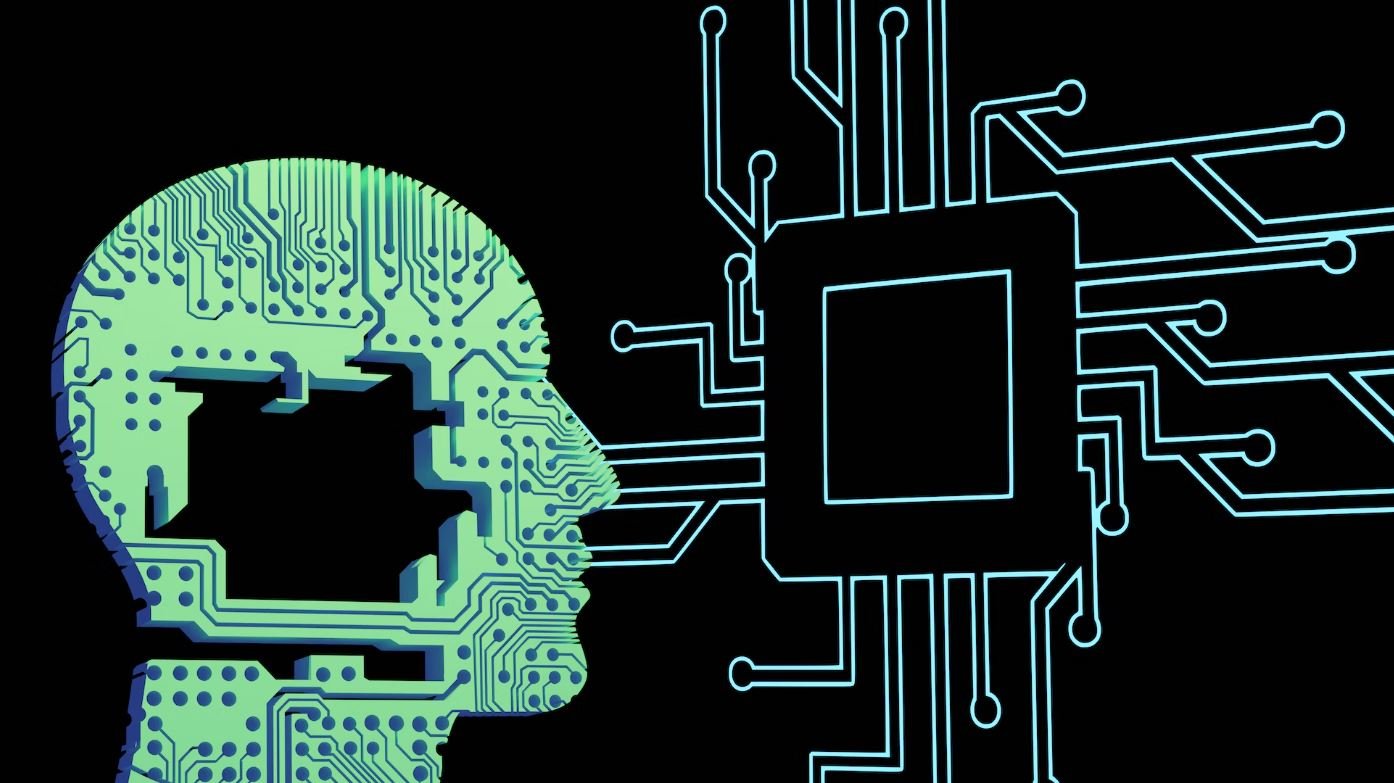Movie Editor
Movie editing is a crucial step in the filmmaking process. A movie editor meticulously assembles and arranges raw footage, sound effects, and visual effects to create a coherent and captivating final product. They play a fundamental role in shaping the narrative, pacing, and overall aesthetic of a film.
Key Takeaways:
- A movie editor is responsible for assembling raw footage and creating a final film.
- Movie editors play a crucial role in shaping the narrative, pacing, and aesthetics of a film.
- They collaborate closely with directors, producers, and other members of the post-production team.
- Movie editors must have strong technical skills and be proficient in video editing software.
- They should also possess a keen eye for visual storytelling and be able to work efficiently under tight deadlines.
**Movie editors collaborate closely with directors, producers, and other members of the post-production team to bring the director’s vision to life**. They work on a variety of projects, including feature films, documentaries, music videos, and commercials, among others. As part of their creative process, editors review all the available footage, select the best takes, and organize them into a coherent sequence that aligns with the film’s script and overall vision. *Every cut they make contributes to the emotional impact and storytelling of the movie*.
Technical Skills and Software Proficiency
To excel as a movie editor, one must have **strong technical skills**. It is essential to be proficient in various video editing software, such as Adobe Premiere Pro, Final Cut Pro, or Avid Media Composer. Editors must be able to navigate these programs efficiently, mastering features like trimming, color correction, and audio editing functionality.
- Proficiency in video editing software, such as **Adobe Premiere Pro**, **Final Cut Pro**, or **Avid Media Composer**.
- Strong technical skills in trimming, color correction, and audio editing functionality.
- Ability to work with various video formats and resolutions.
- Familiarity with visual effects software for compositing and enhancing footage.
- Understanding of file formats and compression techniques for rendering and exporting final films.
Mastering these technical skills allows movie editors to manipulate footage with precision and finesse, elevating the overall production value of the film.
Collaboration and Efficiency
Collaboration is a vital aspect of a movie editor’s work. They collaborate closely with directors, producers, and other members of the post-production team to understand their artistic vision and deliver a film that meets their expectations. Good communication skills and the ability to incorporate feedback and suggestions make for a successful collaboration.
*Efficiency is key in movie editing*. Editors often work under tight deadlines and need to deliver the finished product on time. They must manage their time effectively, making decisions swiftly, while still paying attention to detail. The ability to work efficiently without compromising quality is crucial.
Data Points
| Year | Number of Films Released | Film Budget (in billions) |
|---|---|---|
| 2017 | 1,674 | 142.47 |
| 2018 | 1,682 | 143.88 |
| 2019 | 1,798 | 152.08 |
According to the data in the table above, the number of films released each year has been steadily increasing, indicating a growing demand for movie editors. In line with this, the film budgets have also risen, reflecting the importance of high-quality editing in captivating audiences.
Future Outlook
- Advancements in technology: Movie editing continues to evolve with advancements in technology. Editing software and hardware are becoming more powerful, enabling editors to achieve their creative visions with greater ease and efficiency.
- Demand for online content: The rise of streaming platforms and online content creation has created new opportunities for movie editors. The demand for original films, series, and video content has increased, requiring skilled professionals to edit and deliver high-quality productions.
- Global industry growth: The movie editing industry is experiencing significant growth worldwide. As more countries embrace filmmaking and storytelling, the need for skilled movie editors continues to expand.
Conclusion
As the filmmaking industry evolves, the role of a movie editor remains crucial. Their technical skills, creative eye, and ability to collaborate efficiently are essential in creating compelling and captivating films that engage audiences worldwide. Movie editors have a significant impact on the final product and play an integral role in bringing the director’s vision to life.

Common Misconceptions
Paragraph 1
Many people have misconceptions about movie editors and the work they do. One common misconception is that movie editors are simply responsible for piecing together footage. In reality, their role goes far beyond that.
- Movie editors have a deep understanding of storytelling techniques and the ability to create a coherent narrative.
- They have to make creative decisions on shot selection, pacing, and composition to enhance the overall impact of the film.
- Movie editors often collaborate closely with other creative professionals such as directors, cinematographers, and sound designers.
Paragraph 2
Another misconception is that movie editors only work on feature films. While editing feature films is undoubtedly an important part of their work, movie editors can also be involved in various other projects.
- They may edit short films, commercials, television shows, documentaries, and even music videos.
- Movie editors adapt their editing techniques depending on the medium and the intended goal of the project.
- They may have to work with limited resources and tight deadlines, requiring them to be efficient and adaptable in their editing process.
Paragraph 3
Some people mistakenly believe that movie editors just sit in front of a computer and mechanically cut and paste footage together. However, editing is a highly creative process that involves much more than assembling clips.
- Movie editors carefully craft the emotional and dramatic impact of a scene by manipulating timing, rhythm, and audio-visual elements.
- They enhance the storytelling by choosing which shots to include and which ones to exclude.
- They also use various editing techniques, such as jump cuts or montage sequences, to convey specific moods and ideas.
Paragraph 4
Movie editors often have to deal with the misconception that their role is solely focused on correcting mistakes made during filming. While they do address technical issues, their primary goal is to enhance the overall project.
- Movie editors work closely with directors and other team members to achieve the desired creative vision.
- They can bring a fresh perspective to the footage and make creative choices to improve the storytelling.
- They collaborate with colorists, sound designers, and visual effects artists to ensure a seamless final product.
Paragraph 5
A final misconception is that movie editors work alone and have complete creative control over the final cut. In reality, editing is a collaborative process that involves input from multiple individuals in the film industry.
- Movie editors receive feedback from directors and producers, and their decisions are influenced by the needs of the story, budget constraints, and audience preference.
- They need to be able to communicate effectively and compromise when necessary.
- Ultimately, the final cut is a result of the collaborative efforts of the entire filmmaking team.

Movie Editor
The movie editing industry plays a crucial role in the production of films, ensuring that the final product captures the vision and narrative intended by the director. Movie editors are responsible for selecting and assembling individual shots into a coherent and compelling story. In this article, we explore different aspects of movie editing, ranging from the most successful movies edited by renowned editors to the various techniques employed to enhance the storytelling. Each table presents intriguing data related to the fascinating world of movie editing.
1. The Highest-Grossing Movies of All Time
Unquestionably, movie editing has contributed significantly to the phenomenal success of certain films. The following table showcases the top ten highest-grossing movies of all time, displaying their worldwide box office earnings:
| Movie | Worldwide Box Office Earnings (in billions) |
|---|---|
| Avengers: Endgame (2019) | 2.798 |
| Avatar (2009) | 2.790 |
| Titanic (1997) | 2.195 |
| Star Wars: The Force Awakens (2015) | 2.068 |
| Avengers: Infinity War (2018) | 2.048 |
| Jurassic World (2015) | 1.670 |
| The Lion King (2019) | 1.657 |
| The Avengers (2012) | 1.518 |
| Furious 7 (2015) | 1.516 |
| Avengers: Age of Ultron (2015) | 1.402 |
2. The Academy Awards for Best Film Editing Winners
Throughout the history of the Academy Awards, recognition has been given to the remarkable achievements of editors in shaping the cinematic narratives. Here is a list of the winners of the Best Film Editing category at the Oscars:
| Year | Movie | Editor |
|---|---|---|
| 2020 | Sound of Metal | Mikkel E.G. Nielsen |
| 2019 | Ford v Ferrari | Michael McCusker, Andrew Buckland |
| 2018 | Bohemian Rhapsody | John Ottman |
| 2017 | Dunkirk | Lee Smith |
| 2016 | Hacksaw Ridge | John Gilbert |
| 2015 | Mad Max: Fury Road | Margaret Sixel |
| 2014 | Whiplash | Tom Cross |
| 2013 | Gravity | Alfonso Cuarón, Mark Sanger |
| 2012 | Argo | William Goldenberg |
| 2011 | The Girl with the Dragon Tattoo | Angus Wall, Kirk Baxter |
3. The Number of Cuts per Minute in Famous Movies
The pace and rhythm of a film greatly influence the audience’s emotional experience. The following table showcases the average number of cuts per minute in some renowned movies:
| Movie | Average Cuts per Minute |
|---|---|
| The Bourne Ultimatum (2007) | 117 |
| Moulin Rouge! (2001) | 80 |
| Requiem for a Dream (2000) | 113 |
| Scott Pilgrim vs. the World (2010) | 128 |
| Run Lola Run (1998) | 148 |
4. The Longest Continuous Shots in Film History
While rapid editing can create captivating sequences, long uninterrupted shots hold a unique allure. Here are some outstanding continuous shots in cinema:
| Movie | Duration of Continuous Shot (in minutes) |
|---|---|
| Rope (1948) | 80 |
| Birdman or (The Unexpected Virtue of Ignorance) (2014) | 119 |
| The Irishman (2019) | 3 |
| Victoria (2015) | 134 |
5. The Most VFX-Heavy Movies
With the advent of advanced visual effects (VFX), we have witnessed breathtaking visual realms brought to life on screen. Behold the films that pushed the boundaries of VFX:
| Movie | Total Number of VFX Shots |
|---|---|
| Avengers: Endgame (2019) | 3,000 |
| Star Wars: Episode III – Revenge of the Sith (2005) | 2,200 |
| Spider-Man 3 (2007) | 1,900 |
| The Hobbit: The Desolation of Smaug (2013) | 1,800 |
6. The Films with the Most Deleted Scenes
During the editing process, scenes may be removed from the final cut, often as part of creative decision-making or to improve pacing. Here are movies with some notable amounts of deleted scenes:
| Movie | Number of Deleted Scenes |
|---|---|
| The Lord of the Rings: The Two Towers (2002) | 43 |
| Apocalypse Now Redux (2001) | 49 |
| Blade Runner (1982) | 5 |
7. The Most Influential Film Editors
A few select editors have profoundly impacted the art of movie editing, revolutionizing techniques and inspiring generations. Here are some legendary film editors and their notable contributions:
| Editor | Notable Films |
|---|---|
| Thelma Schoonmaker | Raging Bull (1980), The Departed (2006) |
| Walter Murch | American Graffiti (1973), The English Patient (1996) |
| Michael Kahn | Raiders of the Lost Ark (1981), Saving Private Ryan (1998) |
8. The Most Successful Movie Franchises
Certain film franchises have generated remarkable success, captivating audiences across multiple installments. Below, we explore some of the most triumphant movie franchises:
| Movie Franchise | Total Box Office Earnings (in billions) |
|---|---|
| Marvel Cinematic Universe | 22.626 |
| Star Wars | 10.322 |
| Harry Potter | 9.195 |
| James Bond | 7.077 |
| Fast & Furious | 6.688 |
9. The Evolution of Film Editing
The technique of film editing has evolved over the decades, accompanying the progress of technology and artistic innovations. Here is a summary of various film editing techniques and the periods in which they emerged:
| Editing Technique | Period |
|---|---|
| Montage | 1920s |
| Parallel Editing (Cross-cutting) | 1903 onwards |
| Match Cut | 1921 onwards |
| Jump Cut | 1960s onwards |
| Surrealistic Editing | 1929 onwards |
10. The Role of Digital Editing Software
Advancements in digital editing software have revolutionized the field of movie editing, making the process more efficient and opening up new creative possibilities. The following table presents some widely-used digital editing software:
| Software | Description |
|---|---|
| Avid Media Composer | An industry-standard professional editing software with comprehensive features. |
| Adobe Premiere Pro | A versatile editing software widely used by professionals and hobbyists. |
| Final Cut Pro X | Apple’s flagship software, highly regarded for its user-friendly interface. |
| DaVinci Resolve | A remarkably powerful editing software with advanced color grading capabilities. |
Movie editing remains an essential aspect of filmmaking, dictating the pace, rhythm, and overall impression of a movie. The editors behind the scenes play a critical role in shaping the final artistic vision. From the highest-grossing films to the most influential editors, this article has touched upon various facets of the fascinating world of movie editing. It is through their meticulous work that movies truly come to life, captivating and inspiring audiences around the globe.
Frequently Asked Questions
What is a movie editor?
A movie editor is a software application used to edit and manipulate video and audio files to create movies. It allows users to trim, merge, split, add effects, transitions, and subtitles, and perform other editing tasks to produce a final video.
What are some popular movie editing software programs available?
Some popular movie editing software programs include Adobe Premiere Pro, Final Cut Pro, iMovie, Sony Vegas Pro, and DaVinci Resolve.
Can I use a movie editor on my mobile device?
Yes, there are several movie editing apps available for both iOS and Android devices. Some notable examples include Adobe Premiere Rush, iMovie for iOS, and PowerDirector for Android.
What are the system requirements for movie editing software?
The system requirements may vary depending on the software. Generally, movie editing software requires a reasonably powerful computer with a fast processor, sufficient RAM, and a good amount of storage space. It is also recommended to have a dedicated graphics card for smoother video playback and rendering.
Can I edit movies shot on different devices or formats?
Yes, most movie editing software supports a wide range of video formats, including those captured by various devices like smartphones, digital cameras, and camcorders. Ensure the software you choose supports the format of your footage.
How long does it take to learn movie editing?
The time required to learn movie editing depends on various factors, including prior experience with software, complexity of editing tasks, and the level of proficiency you aim to achieve. With dedication and consistent practice, one can become proficient in basic movie editing within a few weeks or months.
Can I undo changes made in movie editing software?
Yes, movie editing software usually provides an undo feature that allows you to revert changes. This feature lets you go back to a previous state in your editing project, helping you correct mistakes or experiment with different options.
Can I add visual effects to my movies?
Yes, movie editing software often includes a wide range of visual effects, such as filters, overlays, color grading, and special effects. These effects can be used to enhance the look and feel of your videos and add a professional touch.
Is it possible to export movies in different formats?
Yes, most movie editing software allows you to export your edited movies in various formats, including common ones like MP4, AVI, and MOV. Additionally, you can usually choose from different resolutions and settings to optimize the output for different platforms or devices.
What other resources can I use to improve my movie editing skills?
There are numerous online tutorials, forums, and educational websites dedicated to movie editing. These resources often provide step-by-step guides, tips, and techniques to help you enhance your movie editing skills. Additionally, you can also consider joining local film clubs or attending workshops to learn from experienced professionals.




